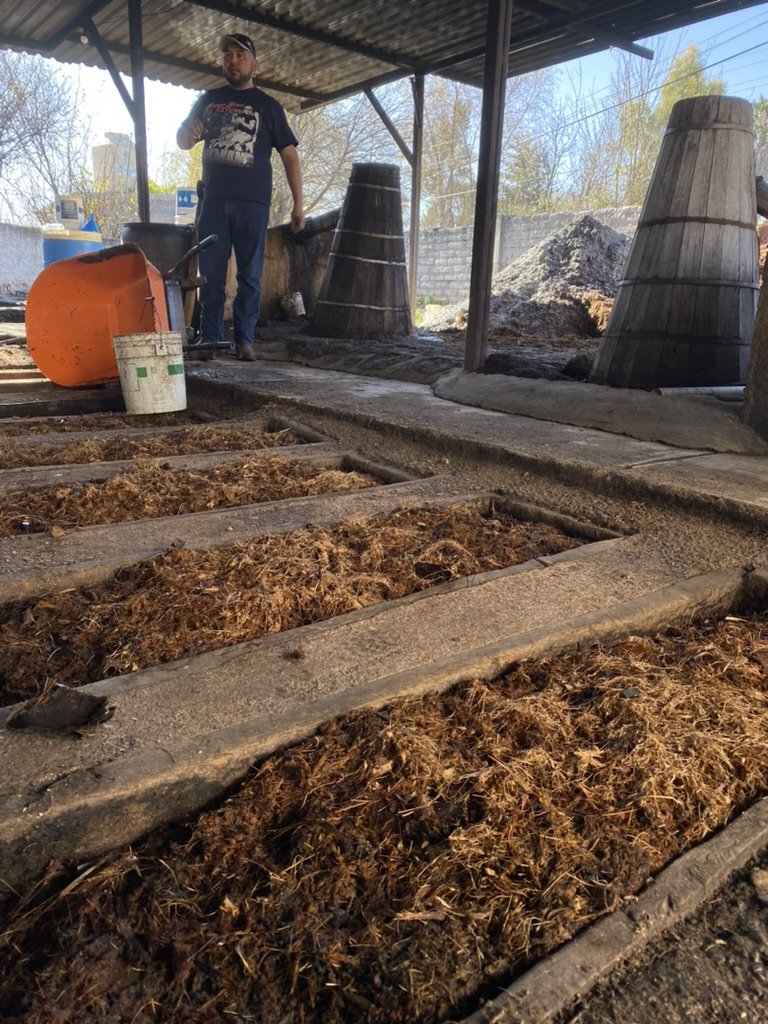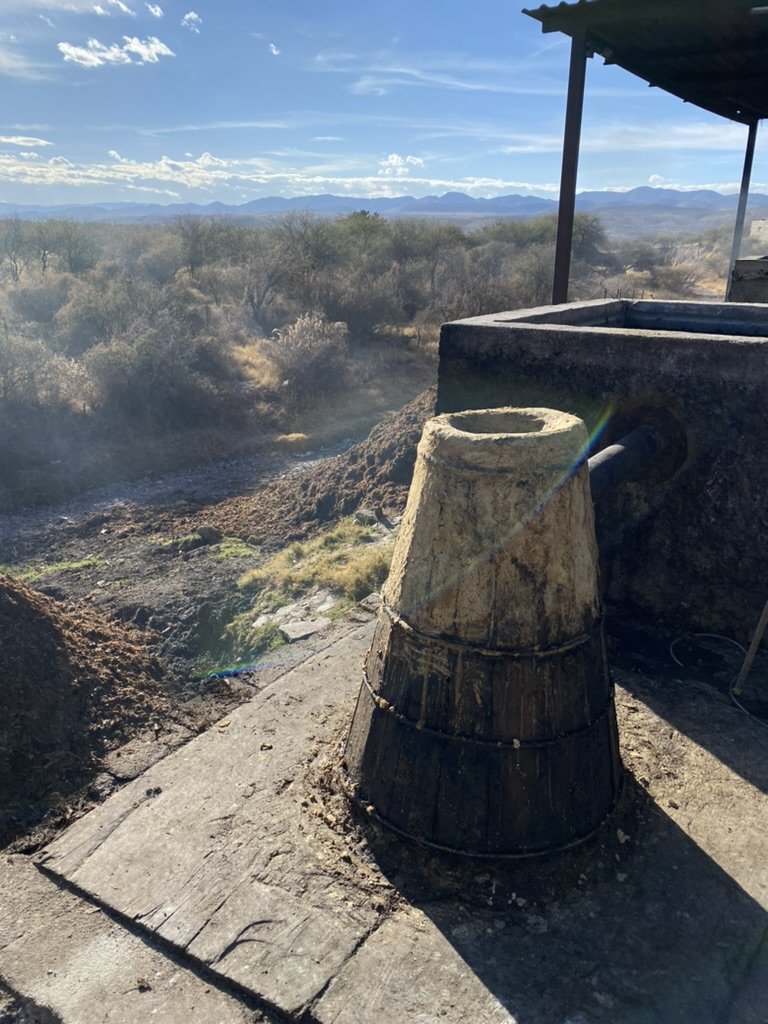cenizo - nombre de dios
Batch: D-RA-01
Release date: August 2023
About 45 minutes drive south east of the city of Durango sits the dusty town of Nombre de Dios. Added to Mexico’s growing list of Pueblo Mágico’s in 2018, it’s the hub of agave spirits production in this state of northern Mexico.
On the outskirts of the town Ramiro Avila keeps a small vinata (distillery) at which he produced this batch of Cenizo in January 2022.
Introducing maguey Cenizo: This is agave ‘Durangensis’. The name gives a clue that it’s the workhorse plant of Durango. You might think of it like the Espadín of the north in terms of its prevalence in the region compared to other agave, although it’s not yet as widely cultivated as Agave Angustifolia in the south.
Cenizo looks a little like Agave Potatorum, and indeed further south, in Puebla, regional varieties of Potatorum are sometimes referred to as ‘Cenizo’. However in 2018 the mezcal regulators declared that only agave Durangensis (native to Durango and surrounding states) can be called Cenizo.
Baby Cenizo in the agave nursery
Agave & Sotol growing wild in the hills around Nombre de Dios
Harvesting from the wild
Said to take between 15-18 years to reach maturity in the wilds around Durango, Cenizo translates as ‘ashen’, which is a flavour profile common to spirits made from it.
Piñas wait for the roast at Ramiro’s vinata
After 3 days roasting over hot rocks in the stone-lined earthen horno, the cooked cenizo was milled by hand using nothing but an axe and brute strength.
Agave mashing by axe in Durango
Fermentation up here in Durango generally takes place in these wood panelled in-earth wells that are kind of morbidly reminiscent of graves. Water is added to the axe chopped mash and it’s left to naturally ferment for 3-4 days.
Distillation in Durango is in this hybrid alembic-filipino style. It’s got the wooden filipino style top condensing pot that you’ll see in Michoacán to the south, but no condensing lid with water running into it, and no in-still capture system.
Instead the vapour is forced out of the wooden top pot into an attached serpentine coil in a cooling bath… the likes of which you would see with regular alembic distillation. The boiling pot is copper, and everything is double passed.
The defining feature of ‘filipino’ style distillation is the in-still capture. So lets call this ‘Durango style alembic’
This marks out second bottling from this vinata, following D-RA-02 in December 2022.
Gracias Ramiro
Ramiro with a bowl of fresh boiled quiote chunks - a delicious snack
Tasting notes:
Nose: Ashen by name, ashen by nature. Strong notes of the ash from a barbecue gone cold. Tones of meat curing in a slightly damp cave.
Palate: Peppered beef jerky upfront, with a sweetness building into the mid-palate. Big and round mouth feel. Really nicely balance with that sweetness mixing with the ash into the tingly and pleasant finish with hints of grandma’s boiled sweets.
Grab a bottle for your collection while stocks last:
Continue your agave spirits journey via the Mezcal Appreciation Society:















